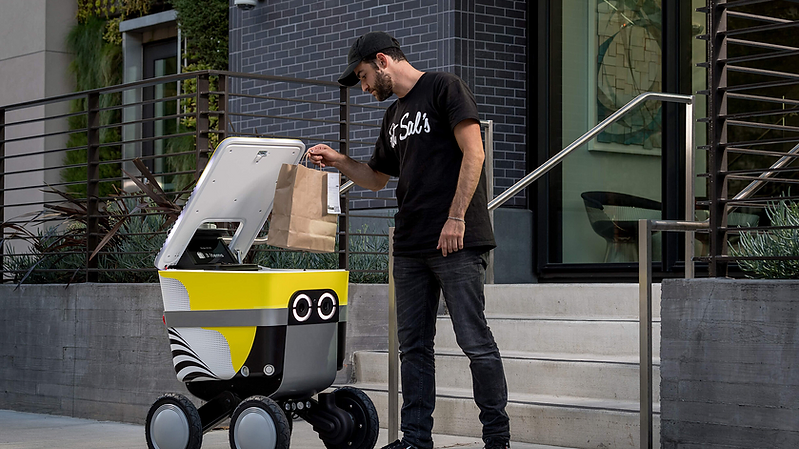This is sci-fi material and it’s just gotten a massive funding: Serve Robotics gains financial boost and goes public to bring food delivery into the future.
Serve Robotics Gains $30 Million in Funding and Goes Public via Reverse Merger
Serve Robotics has successfully secured $30 million in funding and undergone a reverse merger with Patricia Acquisition Corp. After going public, the autonomous delivery robot company sets out to deploy up to 2,000 delivery robots in collaboration with Uber Eats.
Expansion with Multiple Players
CEO Ali Kashani affirmed that this fresh capital would facilitate Serve’s expansion into untapped markets, aligning with the company’s agreement to introduce a fleet of 2,000 delivery bots through Uber Eats.
According to a filing submitted to the Securities and Exchange Commission, Serve currently operates more than 100 robots and has solidified platform-level integrations with Uber Eats, 7-Eleven, Inc., and other major players in the industry. Successful trials have also been conducted with Walmart and a significant pizza quick service restaurant.
Noteworthy growth in delivery efficiency has been a hallmark of Serve’s journey. The company has seen a remarkable 30% month-on-month surge in food delivery orders fulfilled by their robots. Although exact order volume figures were withheld, Kashani attested to the impressive trajectory.
Reasons Behind The Reverse Merger
This financing round catapults Serve’s total funding since 2021 to an impressive $56 million. The synergy with Uber Eats is further underscored by Uber’s participation in this investment, alongside the addition of Uber’s Vice President of Delivery and Head of Americas, Sarfraz Maredia, to Serve Robotics’ board.
Existing investors NVIDIA and Wavemaker Partners have also contributed to this funding round, while newcomers Mark Tompkins and Republic Deal Room have joined the fray.
Employing a reverse merger strategy for public entry enhances Serve’s finances. It also attracts potential further investments. This approach is hailed by Kashani as an expedient and cost-effective alternative to the traditional IPO route, offering quicker access to capital.
The reverse merger deal resulted in the issuance of 3,720,339 shares, raking in $14.1 million, a contribution that bolsters the overall funding sum.
Serve Robotics is poised to disrupt the last-mile delivery economics by harnessing the potential of its delivery robots. The platform’s evolution has been substantial since its inception under Postmates’ umbrella in 2017.
AI Hepls with Near 100% Order Completion
Presently operating independently from Postmates following Uber’s acquisition, Serve’s robots have evolved from initial prototype issues to achieving an impressive 99.9% order completion rate. This reliability owes much to advancements in artificial intelligence, which have empowered the robots to adeptly interpret and navigate their surroundings.
Kashani highlights the robots’ dual role: not only reducing costs through their reliability and efficiency but also enabling additional revenue streams through out-of-home advertising. This unique proposition in the last-mile food delivery arena has never been seen before.
Serve Robotics envisions expanding its robotic fleet to various markets, including Dallas and the Bay Area. However, the final list of target markets under the Uber partnership remains in progress.
Potentials Remain Untapped
While Serve Robotics charts its ambitious trajectory, the broader landscape of robot delivery is still maturing. The company’s recent funding announcement and its strategic ties with Uber underscore the industry’s growth potential.
Serve aims to realize the promise of cost-effective autonomous deliveries while tackling carbon emissions and urban congestion.
Serve’s journey began as a division within Postmates in 2017, eventually spinning off in 2021 after Uber’s acquisition of Postmates. The pandemic further accelerated the demand for robotic deliveries as contactless services gained traction.
Yet, the industry still grapples with challenges, including operational costs and limited deployment areas. Serve’s dependence on Uber Eats for a significant portion of its revenue adds an interesting dynamic to its newfound independence.

